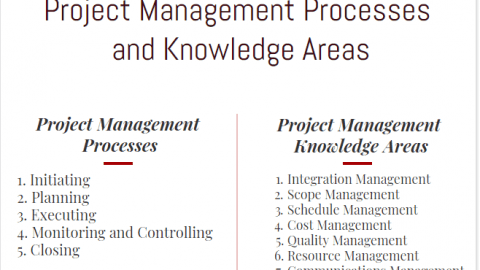Project Proposal vs Project Charter
Project Proposal and Project Charter are two different documents and their purposes are different as well. Both proposal and charter are crucial project documents that outline very different concepts within a project. However, many PMP aspirants mix up them because they sound quite similar. In this article, we will talk about the importance of having a well-established documentation framework for a project and the difference between the essential project documents to guide the project teams and stakeholders. Now, let’s go deeper into the topic: project proposal vs project charter and discuss how key project documents help team members towards achieving the organizational goals.
Table of Contents
Before to begin, let’s watch the following video and discover what exactly a project charter is.
Project Documents
If the project documents are created well and designed to meet specific requirements, it will be quite easy for the managers and stakeholders to evaluate all the processes within a project. Because documents create a guideline for the participants to track changes and project performance. For that purpose, a number of documents, charts, schedules, and reports are created and used.
The PMBOK Guide defines many project documents to facilitate processes that take place in different phases of a project’s life cycle. Therefore, each document is associated with a particular knowledge area. Below are some project documents mentioned in the PMBOK Guide.
- Project Proposal
- Project Management Plan
- Project Charter
- Project Schedule
- Stakeholder Register
- Risk Register
- Work Performance Reports
- Work Breakdown Structure
Before discussing the key differences between the project proposal and project charter, let’s take a glance at other key documents.
Project Management Plan
A project management plan includes the essential project documents such as scope, goals, budget, deliverables, communication plan, risk register, change management plan, configuration management plan, etc. It is a formally approved plan that details how a project will be carried out.
Project Schedule
A project schedule is a living project document that demonstrates what activities need to be completed in which time period. It shows the planned dates of key deliverables and milestones as well as including resources for those deliverables. It is a communication tool that is updated and reported as the project progresses.
Stakeholder Register
A stakeholder register is created just after the project charter is being signed. It is a key document like the Project Proposal or Charter that is used to classify, identify, and assess the stakeholders.
Risk Register
A risk register is a tool that is used to identify risks within a project. It includes information for the identified risk such as the risk owner, risk level, mitigation notes, and the probability and impact level.
Work Performance Reports
Work performance reports include performance measures to guide the project team and stakeholders regarding how the project is performing. Earned Value, Cost Variance, Schedule Variance, Quality Measurements, and delays are the inputs of work performance reports.
Work Breakdown Structure
Work Breakdown Structure is a hierarchical decomposition of the project scope to be executed. It is key to planning, scheduling, budgeting, and reporting processes within a project.
As you see from the above, documentation is one of the most important processes for the success of any project. Each phase of a project needs related documentation. With the help of these project documents, reports, and templates, accumulated data is stored and used when needed. Depending on the size of the contract or the type of organization, a project manager, a program manager or a team member can be the owner of this process.
Project Charter
A project charter is also known as a project definition document is a formal and short document that clearly defines the objectives, scope, goals, stakeholders, and teams involved in the project.
According to the PMBOK Guide, the project charter is an official document that formally authorizes a project or a phase and documenting initial requirements that satisfy stakeholders’ needs and expectations.
Typically, a charter has four basic steps
1. Determine the Project Vision
Determine the project scope, major deliverables, and the project vision. Explain why the project is needed.
2. Describe the Project Organization
Describe the stakeholders involved in the project. Create an organizational chart and specify the reporting lines as well as describing roles and responsibilities.
3. Plan the Approach to Implementation
Plan the activity lists to be completed and include major phases, project milestones, and deliverables while creating an implementation plan.
4. List the Risks and Issues
Identify risks, dangers, premises, constraints, and issues.
What is Included in the Project Charter?
A project charter typically includes but not limited to the following information related to the project;
- Name, description, purpose
- Project objectives
- Expected benefits
- Deliverables
- Assigned project manager
- Assumptions and constraints
- Major project stakeholders
- Expectations
- Acceptance criteria
- Major project milestones
- Estimated Budget
- Risks and issues
- Approval criteria
Note that PMP aspirants often ask the following question: Who signs the project charter? The answer is the sponsor or someone from top management has the authority to sign it.
Project Proposal
A project proposal is a detailed document that is used to persuade a sponsor and/or a group of stakeholders that a project needs to be carried out to solve a particular business problem or bring an opportunity.
The project proposal outlines the work that needs to be carried out and explains the management plan for how the project will be managed. The project director is the owner of this process.
Characteristics of the Project Proposal
Below are a few characteristics of the project proposal;
- A project proposal outlines the project that needs to be accomplished.
- Explains why the project should be carried out and what is the aim of the project.
- Aims to persuade a sponsor and/or a group of stakeholders that the team and the project manager are capable of bringing a project to a successful end.
- Explains the management plan
- Aims to persuade readers regarding the availability of resources required to complete the project on time and within budget.
Project Proposal vs Project Charter
What are the differences between Project Charter and Project Proposal?
- The proposal takes place in the initiating phase where the charter takes place in the planning phase.
- The owner of the project charter is the project manager but the owner of the project proposal is the project director.
- The project charter is created once the proposal is approved.
- The proposal is created once an idea is conceived.
- A project charter is a reference document that defines the project objectives as well as furnishing the project manager with the authority to manage the project. On the other hand, a proposal is a persuasive document that convinces the stakeholders regarding why the project should be carried out.
Summary
As it is mentioned in the first paragraph, Project Proposal and Project Charter are two different documents and they serve different purposes. They are the main documents created for project management purposes. Both documents include project vision, objectives, and budgets. The main difference between them is their purposes. The Charter is created to define the project on the other hand The Project Proposal that outlines is created to conceive the key stakeholders.
Note that this is an important topic for the PMP Certification exam. You may encounter one or more than one question related to them.
See Also
External References

11+ years strategic communications, marketing, and project management experience. I am a trainer at StarWood Training Institute, focusing on online courses for project management professionals.












Enjoyed looking through this, very good stuff, thanks . “Nothing happens to any thing which that thing is not made by nature to bear.” by Marcus Aurelius Antoninus.
After a while, regular commenters start to form a community. It starts to feel intrusive to insert yourself.
Hello thanks for this insight, very informative.
Small clarification though on the owner of the Project Charter and Project Proposal. The info from the figure and the text below it seems swapped?
Thank you for your feedback Ronnie. Images are updated.
Thank you so very much ,for such an informative article.
Concise and insightful.
Once again thank You.